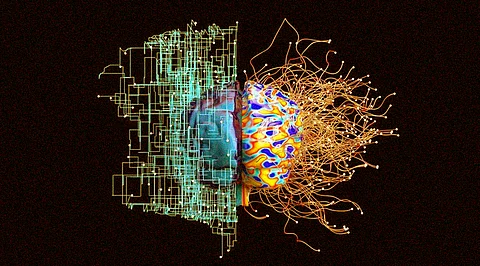

Deep Learning is a terminology that is frequently used interchangeably with machine learning; however, it is not the same thing. Machine learning is a sort of artificial intelligence in which a computer learns to accomplish something without being instructed to do so. DL, on the other hand, is the process by which machines learn to perform something using an artificial neural network made of a number of layers organized in a hierarchy.
Deep learning is a sort of machine learning and artificial intelligence (AI) that mimics how people acquire specific types of knowledge. DL is a critical component of data science, which also covers statistics and predictive modelling. Deep learning is particularly advantageous to data scientists who are entrusted with gathering, analysing, and interpreting massive volumes of data; deep learning speeds up and simplifies this process.
Deep learning, in its most basic form, may be viewed as a method of automated predictive analytics. Deep learning algorithms are piled in a hierarchy of escalating complexity and abstraction, as opposed to typical machine learning algorithms, which are linear.
Deep learning computer algorithms go through the same procedure as a kid learning to recognize a dog. Each program in the hierarchy performs a nonlinear mapping on its input and then utilizes what it learns to generate a statistical model as output. Iterations are repeated until the result meets an acceptable degree of accuracy. The word deep was motivated by the number of processing layers that data must flow through.
The learning process in typical machine learning is monitored, and the programmer must be exceedingly detailed when instructing the computer on what sorts of things it should search for to determine if a picture includes or does not contain a dog. This is a time-consuming procedure known as feature extraction, and the computer's success rate is totally dependent on the programmer's ability to precisely specify a feature set for the dog. The benefit of deep learning is that the software creates the feature set without supervision. Unsupervised learning is not only quicker, but it is also more accurate in most cases.
Initially, the computer program may be given training data, which is a collection of photographs for which a human has categorized each image as a dog or non dog using metatags. The software creates a feature set for dogs and builds a prediction model using the information received from the training data. In this scenario, the computer's first model may suggest that everything in an image with four legs and a tail must be labelled dog. Of course, the software isn't aware of the terms "four legs" or "tail." It will just seek pixel patterns in the digital data. With each cycle, the prediction model becomes more complex and accurate.
Unlike a baby, who may take weeks or even months to grasp the notion of a dog, a computer program that employs deep learning techniques may be presented as a training set and sift through millions of photographs, precisely recognizing which images include dogs within a few minutes.
Deep learning systems require enormous quantities of training data and processing capacity to attain an acceptable degree of accuracy, neither of which was widely accessible to programmers before the age of big data and cloud computing. DL programming is capable of producing accurate prediction models from vast amounts of unlabelled, unstructured data because it can generate complicated statistical models straight from its own repetitive output. This is significant as the internet of things (IoT) becomes more prevalent since the majority of data generated by people and machines is unstructured and unlabelled.
Deep learning is all the rage these days, thanks to its superiority in terms of accuracy. DL is being aggressively invested in by major technology firms since it has become vital in every industry as a means of making machines smarter. Google AlphaGo is only one instance of deep learning that made news when it defeated Lee Sedol, one of the world's top Go players.
Deep learning is utilized extensively in Google's search engine, speech recognition systems, and self-driving cars. Google introduced Smart Reply, a deep learning network that composes brief email messages for you.
Join our WhatsApp Channel to get the latest news, exclusives and videos on WhatsApp
_____________
Disclaimer: Analytics Insight does not provide financial advice or guidance. Also note that the cryptocurrencies mentioned/listed on the website could potentially be scams, i.e. designed to induce you to invest financial resources that may be lost forever and not be recoverable once investments are made. You are responsible for conducting your own research (DYOR) before making any investments. Read more here.
